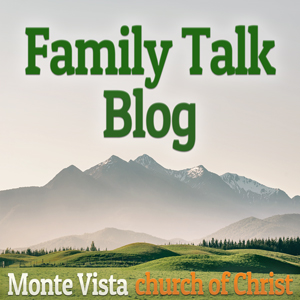What We Believe — Scripture
We have seen that the Gnostics added the name of Jesus or Mary to many of their documents. This method of making heresies acceptable is called “syn-cre-tism,” the merger or attempted merger of different religions, cultures, or schools of thought. It is not a new concept but has been seen throughout history. In Historical syncretism, Christianity and paganism, at different times, were alternately persecutor or persecuted. However, each influenced the other. For example, a 10th–11th-century manuscript in the British Library known as the Lacnunga describes a charm against poison said to have been invented by Christ while on the cross. But the charm has a parallel in Anglo-Saxon magic. For centuries, to make the heresy acceptable to Christians, the false teachers and Gnostics have added the name of Christ, Mary, or a favorite Bible character to their doctrine.
Historical syncretism: Christianity and classical paganism influenced each other even though they were each persecuted by the other at various times. In one aspect, the virgin goddess of the Ephesians, Artemis (Acts 19:27), was replaced by the virgin mother of Christ by the Roman church. In another way, the sacraments of paganism mentioned in the Gospel of Philip found their way into the same Roman church.
Modern syncretism: In the modern era, examples of syncretism may include Christians incorporating concepts of the Divine Feminine from neopaganism into Christianity or neopagans seeking to integrate people like Jesus or Mary into Wiccan worship. In conversations at work, or on a TV program, you have probably heard someone talking about the “Divine Feminine.” The concept of divine feminine energy is so much more than a new-age buzzword. Many today refer to it as sacred spiritual energy within each of us. These people say the Divine Feminine is a form of energy that all beings possess. Known by many names, such as shakti, yin, and lunar energy, it is often connected symbolically with the moon, Gaia (Mother Earth), and water. It is defined as one half of the spiritual life in partnership with the Divine Masculine. Proponents of this belief view the Divine Feminine and Divine Masculine as rising together and working together effortlessly and harmoniously to create and nurture. This original state of being is represented in ancient symbols like the yin yang, white balancing black, and good balancing evil. Modern progressives claim the black is now overpowering the white. Bottom Line for Today: The masculine is destroying the earth, and the feminine must take over to restore nature to support life. The movement to place women in leadership roles, both in civic offices and in church positions such as preachers, elders, and deacons, is a direct result of Divine Feminine reasoning.
Christopaganism – Joyce and River Higginbotham define Christopaganism as: “A spirituality that combines beliefs and practices of Christianity with beliefs and practices of Paganism, or that observes them in parallel.” They give examples of people identifying as Pagan but observing both Pagan and Christian holidays, using beads to count repetitions of prayer, performing rituals of communion, and pagan celebrations like Mardi Gras. The symbols of Christmas and Easter also contain the merging symbols and characters.
Consider the following quote found in “Christopaganism: an Inclusive Path” by Joyce and RIVER Higginbotham. “What is Christopaganism? Christopaganism is “a spirituality that combines beliefs and practices of Christianity and paganism, or that observes them in parallel.” If Christopaganism is a blending of Christianity and Paganism, then Christian witchcraft is a blend of Christianity and witchcraft.”
This idea of Christian and pagan ideas together seems ridiculous to us. As we look at the Gnostic gospels, it is easy to see the unblendable differences between them and the gospels in the New Testament. Christ and His apostles teach us to live a righteous life, free of “sin,” while paganism leaves morality to the individual. A Christian views sinful practices as bondage leading to eternal death. But to the pagan and Gnostic, the same practices are viewed as liberation from the dictates of society. For instance, sex outside of marriage is sinful to the Christian, while the pagan may see sex as a form of self-expression in a patriarchal society. The same goes for social drinking, drug use, dancing, and more! (Romans 1:21-32). Pagans often embrace the light and the “dark” aspect of nature and humanity – the moon, the darkness, wild creatures, and works done in shadows. Christians who follow Christ’s teaching conduct themselves according to the light of God’s Word. “If we walk in the Light as He Himself is in the Light, we have fellowship with one another, and the blood of Jesus His Son cleanses us from all sin” (1 John 1:7). Paul reminds brethren that they had once practiced the things of the pagans and the Gnostics and should not bring those practices into the church. “You were formerly darkness, but now you are Light in the Lord; walk as children of Light” (Ephesians 5:8).
Why would anyone that loves and follows God’s inspired word want to add the profane writings of pagans, philosophers, and Gnostics to the “Faith which was once for all handed down to the saints” (Jude 1:3)? May we ever live in the light!
